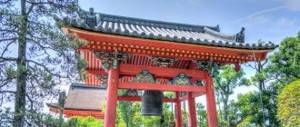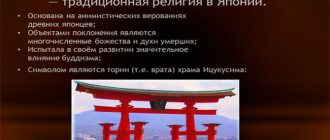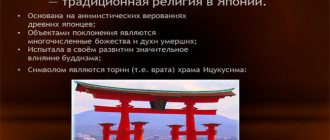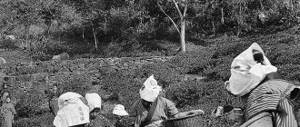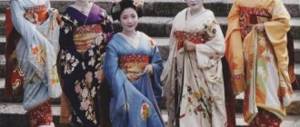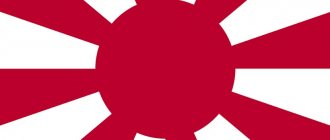Let's immediately say that Tokyo's nightlife is concentrated in several areas: Roppongi, Kabuki-cho and Ginza. Here every tourist can find entertainment to suit their taste. Restaurants, bars, clubs, striptease and sex shows greet you with bright signs and Western-style names: “The Room”, “Jumanji 55”, “Green Land” and others. There are also authentic Japanese establishments, for example Nomi-ya-bars - small, sometimes ridiculously narrow establishments where you can enjoy delicious and unusual Japanese dishes.
But let's get back to the real nightlife and leave all these delicacies for another time.
Prices
So, on to the prices. Entrance to most establishments is free, but as elsewhere, there are clubs with entrance fees, often not exceeding a couple of hundred yen. Be prepared to shell out 500 yen (~$5) for a cocktail at a regular bar.
The average price for one drink in a night drinking establishment in Tokyo is 600-800 yen ($6-8). Based on this, a logical question follows: “What should a budget partygoer do?”
Immediately forget about the option that many CIS clubs turn a blind eye to - bringing alcohol with you. This number does not work here. But no one forbids you to come to the party already a little “happy.” Prices for beer in the supermarket start from $1.6, a half-liter bottle of whiskey will cost you from $20, while sake can be purchased for $10!
By the way, in Japan it is considered the norm not to sit in one club/bar all night, but to visit 2-3 or even more establishments during this time.
It is worth noting that nightlife is different for visiting adventurers and the Japanese themselves. The Japanese are accustomed to spending time in bars or hostess clubs (more about them below), while most tourists enjoy discos and other more active events.
Where to go for Tokyo nightlife
Tokyo's nightlife districts are not limited to Shibuya, Ebisu or Shinjuku. In fact, in the diverse Japanese capital, life is vibrant around the clock, so finding a suitable option will not be difficult.
» ALSO READ ARTICLE - All special districts of Tokyo. Where is the best place for a tourist to stay?
In more elegant areas, such as Ginza, Shimbashi or Aoyama, there are expensive and elegant clubs on the top floors of office buildings that cannot be entered from the street. Tickets are distributed exclusively and in advance, and they cost a lot. These clubs host nightly fashion shows and host DJs invited from the other side of the world for one night.
Where to start? If you couldn’t get a ticket to an artsy club in Ginza, but want to experience Tokyo’s nightlife, don’t worry. There is a democratic way to indulge in fun. Why not try one of Shibuya's standing tachinomi bars in the evening?
The name itself speaks for itself - in such bars there are no chairs, and visitors drink while standing. Once upon a time, these were inexpensive establishments that were built in extremely crowded conditions in the capital. Today they have acquired a special chic and have become quite expensive. But the prices do not stop the Japanese, who can be seen here on weekdays after a hard day at the office.
After an aperitif at the standing bar, head to any of the izakaya taverns. There you will be treated not only to traditional Japanese snacks, but also to signature seasonal cocktails that you won’t find anywhere else. By the way, many izakayas also operate as restaurants during the day, serving lunch for a modest fee. And by the evening they are transformed, and prices become much higher.
After an izakaya, a good Japanese option is karaoke or a nearby nightclub where you can dance until the early hours. Latin clubs on Roppongi are quite affordable, and for 2,000 yen you can not only get in, but also get one drink free. And then dance the night away.
About drugs
If we talk about drugs, this is a sore subject for Japan. The fact is that during the Second World War, Japanese soldiers were given amphetamine. It helped the military to be more concentrated, dulled the feeling of hunger and the need for sleep, and helped increase endurance.
The war ended, but the dependence remained. In the 50s, more than 2 million Japanese used this drug, despite the fact that it was not difficult to obtain. Outside the window of 2017, and with the help of the Japanese government and the developed anti-drug programs, this disease was overcome.
However, the amphetamine has gone away and many have become addicted to “weed,” although in percentage terms in Japan only 2% of the total population have tried cannabis at least once in their lives, compared with 30% in the UK.
Without exaggeration, Japan is strict about this. Expect big troubles for the substance found in your possession, and you certainly can’t count on visiting Japan again. However, there are rumors that you can try your luck to find something with the Africans on Roppongi.
About dance and music
Just 3 years ago, in 2014, dancing after midnight in nightlife establishments in Japan was prohibited.
This curiosity is explained by the fact that in 1948, as part of the fight against prostitution, the government approved a corresponding decree at the legislative level. Moreover, in order to dance in the establishment at least until 00:00, the owner had to obtain special permission. Of course, over time, they stopped paying attention to this ban, until 2010, when a student was shot dead in a night brawl in one of the clubs in Osaka.
Interestingly, the lifting of this, for many, absurd, ban was greatly influenced by the 2021 Olympics. The Japanese government hopes this will help increase income for bar and restaurant owners.
If we talk about music, it can differ radically from establishment to establishment. For example, it’s not uncommon for a club to play only 3-4 songs alternately throughout the night. In many establishments you can hear the most popular Western tracks, which are what the Japanese mostly hang out with.
What else does Tokyo have to offer?
In addition to the listed types of entertainment, in Tokyo, of course, there are discos, pubs, and bars that are open until late. After the expensive VIP club in Ginza, they may seem too simple. But each has its own charm, music and entertainment that sets it apart from its neighboring competitors, so it's worth taking the risk and stopping by. By the way, girls can get into some establishments for free. Somewhere you will be surprised by the unusual decor and paintings hanging on the smoky walls, and somewhere unexpectedly you will find yourself on a rooftop terrace with a swimming pool and a view of Tokyo at night.
About striptease, sex and prostitutes in Japan
So, let's start with the most harmless thing. You can find strip bars in Japan everywhere, especially in the Tokyo districts mentioned at the beginning of the article.
Mostly Japanese and other Asian women dance, but there are also girls of non-Asian appearance. You can look, but you can’t touch! Any attempts to have sexual contact with a stripper in such places are strictly suppressed. Nobody wants problems with the police.
Fun fact.
When entering an establishment of this kind, you will be offered (for a fee or free of charge) pieces of paper that resemble money, but are not money. The trick is that strippers are not allowed to poke real banknotes, and this “know-how” does not let guests get bored.
Yes, you heard correctly, prostitution is illegal in Japan. True, the law itself is very vague. For example, there is no criminal liability for the provision of services of this kind. And the concept of “prostitution” in Japan only includes ordinary sexual intercourse. Oral, anal, and other types of sex and perversion are not considered selling your body. As a rule, Chinese, Thai and Filipino women do such things, but Japanese women also do not disdain this type of income.
They usually stand on the street, near them you can see guys running around and thrusting something into the hands of passers-by. These are booklets with photos of those same moths. In them you can choose a girl or a boy for the night.
However, on the same Roppongi you can also find ordinary Japanese girls who are simply interested in communicating with foreigners.
Separately, it is worth mentioning the very popular hostess bars in Japan. Let's briefly say that these are establishments with paid entrance (from $40 per hour), the fee usually includes 1 or 2 cocktails. A special feature is the hourly fee of the hostess girl, who sits down with you, laughs at your jokes, refills your beer and more... You can read more about hostess bars in our article.
Nightclub Womb
Externally, the club is not particularly noticeable, and you can guess that this is the famous Womb club from the inconspicuous sign. Upon first inspection, it seems that the interior is unremarkable at all, and in theory nothing noisy should happen here. But this feeling is deceptive. The nightclub staff asks particularly “cheerful” clients to speak more quietly in the morning so as not to irritate the local residents. The sound system also works in quiet mode. Womb's face control allows clients who are over twenty years old and who have a passport or driver's license with them. There is a general queue here, even for VIP guests.
The Womb nightclub is the largest in Tokyo. It has four floors, each with its own bar. On the first level there is a wardrobe and an elegant sitting area; on the next level there is a huge dance floor that can accommodate up to 1000 people; the world’s largest disco ball is suspended from the ceiling; on the third and fourth levels, respectively, there are lounge areas. I would especially like to say about the toilets: they are located on each floor, and most importantly, between the men's and women's there is a touch wall, where you can send your friend a message that he/she will definitely read!!!
The equipment of the Womb-a club will intrigue any modern DJ. The staff has a Phazon sound system at their disposal, as well as a laser and light system from Technics and Pioneer. Thanks to these fantastic devices, the club often includes: Victor Calderone, Jeff Mills, David Morales, Dave Seaman, The Chemical Brothers , Sven Vath and others. They mostly play techno, house, and drum and bass music here. We advise you to visit the Dimension K and Renaissance parties, where the most delicious and grandiose tunes from the world of club music are heard.
Finally, let's talk about safety.
Showdowns, brawls, theft - all this can easily be found in almost any Asian country.
But not in Japan. Once in one of the party areas at night, you will be visited by a very strange feeling. Among all this fun, you feel at ease and, most importantly, safe! Even if there are no police nearby, you don’t have to worry about your pockets being picked. The crime rate in Japan is one of the lowest in the world. And the Japanese know how to relax and have fun without aggression.
Night Tokyo is waiting for you. We definitely recommend seeing another side of this metropolis. Tokyo is an amazing city that you can admire endlessly.
Osaka
- Club Karma: On Fridays and Saturdays there are techno and house parties, often hosting famous foreign DJs. The club has a rather rough interior, so it's not a place to just hang around.
- Joule: This is a wildly popular club in the hectic Shinsaibashi area. He adheres to a certain musical policy, but the atmosphere is informal and friendly.
- Sam & Dave: A nightclub chain that everyone describes as high energy, with lots of entertainment and drinks. Foreign DJs are regularly invited to perform R&B, hip-hop, house, techno and disco programs. The most popular Sam & Dave is in Nagahoribashi, but there are also clubs in Shinsaibashi and Umeda that also attract large crowds.

